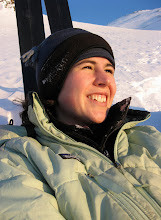I thought I would take this moment to let you all know that it is mango season here in Guatemala. This means:
1) I walk out my front door, go one block to the market and have heaps of Mangos to choose from. Did you know there are many different varieties of mangos? I didn't... but now I'm learning the names of each type.
2) I eat at least 2 to 3 mangos a day and pay nearly nothing. Aside from the fact that my family usually already has heaps of them in the house, yesterday I paid 1 Quetzal for a dozen mangos (that's about 13 cents).
3) I always seem to have mango fiber stuck between my teeth despite the fact that I floss 12 times per day. On this last point it doesn't help that nobody cuts mangos here, rather they eat them as you would an apple. Everytime I have tried to take the logic path of cutting mango slices my family is quick to point out that I don't actually
need to do that. Thus I have given into the Guatemalan way of eating mangos.
On a side note: Given that we had nothing else to do for the 10 or 11 hours Felicitas and I spent on the bus on Sat., we ate quite a number of mangos during the course of the day. Not an easy feat when your crammed against people under the sweltering heat. But it was well worth the pain!




















































